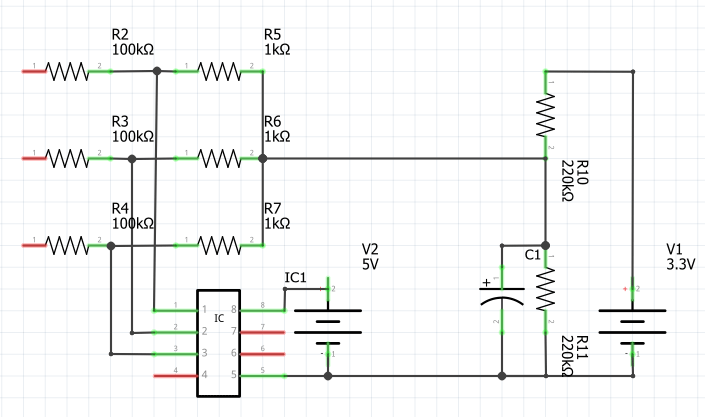Hi guys, I’ve watched this project from a while, first of all I want to give my congratulations to every one who puts their grain of sand to build such a big and interesting project.
I’ve worked in something similar to this (power monitoring) and emonlib has been helpfull with my particular work.
I don’t know if my doubt belongs here.
I’ve read here (somewhere, a while ago) that it is not possible to measure 3 phase voltage with one device, but I read it after I develop my own setup and the code to measure 3phase voltage, and it works “well”, because when a phase is not conected it drops the other two phases measurement.
Let me explain how I made my device
Its feeded by a switched power supply, so the GND and VCC has no galvanic continuity with AC inputs.
Was made with a nodemcu and a 8ch 12bit ADC, using 3.3v as reference, and a voltage divider to set the neutral of power grid at 1.65V in the device (3.3V— 220k - x - 220k —GND, where neutral is connected to “x” point).
A voltage divider of 100k and 1k is by each phase (phase — 100k ---- 1k ---- neutral <at 1.65V>), and ADC measuring voltage at 1k resistor.
A voltage divider to each phase to get aprox + - 1.5V peak (on 120VAC system) of sinusoid excursion (for positive and negative semicicle).
Yes maybe I’m crazy by not using a voltage TX but I think it is not necesary if everything is handled very carefully.
I didn’t use emonlib, but I used some lines of the library, thanks again to the community.
There is a behavior that is very particular, on phase 2 there is a over measure (about 5% of voltmeter value) meanwhile phase 1 and 3 measure ok (according the voltmeter and the theoric calibration factor estimated for this combination).
If a phase is not connected, it shows a 3v (even if its attached to neutral) and the other two drops around 100V.
My question is… Why is it not possible to measure the 3 phases with the same device?
Thanks in advance, hope to don’t bother you with my doubt and sorry for my bad english.

